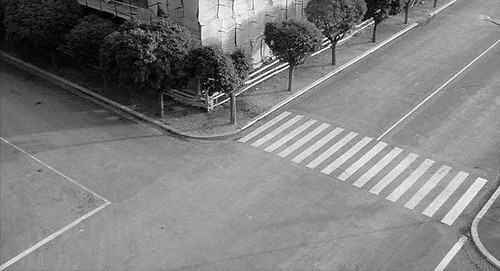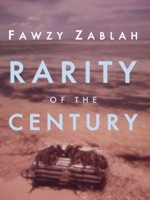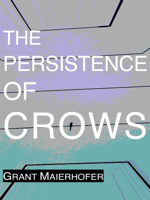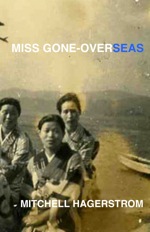 Much has been said regarding the condition of modern man, in particular, the overwhelming feeling of alienation that he experiences. This is something that I feel acutely day to day, but perhaps it has something more to do with a certain personality type. That, however, might only deal with the intensity of the feeling itself. For me, it precedes all that I attempt to accomplish – the same path I must pass through every time I desire to travel elsewhere.
Much has been said regarding the condition of modern man, in particular, the overwhelming feeling of alienation that he experiences. This is something that I feel acutely day to day, but perhaps it has something more to do with a certain personality type. That, however, might only deal with the intensity of the feeling itself. For me, it precedes all that I attempt to accomplish – the same path I must pass through every time I desire to travel elsewhere.
In terms of how I perceive it, it’s a feeling of disconnection from others, an inability to communicate. Because of that, I feel a general isolation, not only from others, but also from myself in the sense that it becomes difficult to gauge what I want or what I’m exactly feeling, if anything at all – a general hollowness inside.
There’s a sense that I’m out of place and drifting, and there’s a sense of hopelessness when it comes to understanding others or having others understand me. Occasionally, I’m lost and it’s hard to know my place in this world, or what to do to attain whatever my place should be, or even if I have one.
The ultimate irony of this world is that thousands of people pass by me daily on the streets, yet all of them are, to a certain degree, unknowable. I’m certain that everyone has felt one of these things every now and then, to some extent, and much of the literature and art of the 20th century is devoted to this very issue.
One director who has been very successful in expressing this alienation is Michael Antonioni in his so-called ‘Trilogy of Alienation’, which was a name most likely coined by the critics rather than the director, due to their similar themes. The films are L’Avventura (1960), La Notte (1961), and L’Eclisse (1962).
In these films, instead of describing the isolation and emptiness, Antonioni makes the viewers feel it themselves. Instead of literally spelling out and describing what the characters are going through, he creates a visceral atmosphere for the audience.
Of course, since the experience is one of alienation, it doesn´t make for an exciting moviegoing experience, as many viewers have considered his films boring and pointless. But I think that was what Antonioni was trying to do, partly.
The fact that the audience feels boredom and restlessness, two sensations associated with alienation, is a sign of Antonioni’s success. This is no doubt an example of film created as art as opposed to entertainment.
But how does he create the visceral experience in the viewer? The most noticeable thing he does – actually, the most noticeable thing he doesn´t do is maintain a narrative.
In the first film of the trilogy, L’Avventura, he does attempt to set up a narrative, but there isn’t a resolution. In the movie, a woman on vacation with her fiance and her friend disappears, and the fiance and friend attempt to find her throughout the movie. This narrative falls apart however, as we’re increasingly focused on the two remaining people. In the end, we don´t even know if the girl is found or not found, she just isn’t mentioned past a certain point in the movie, as if she were completely forgotten about.
In La Notte, the lack of plot is more visible. Instead of any kind of setup, the movie follows a husband and wife as their relationship slowly deteriorates. Even though that may sound like a plot, it’s actually just a summary of the events that happen, none of them logically progressing from one point to another.
The structure of L’Eclisse is even more abstract, as not only narrative is broken, but continuity is completely discarded. You’ll have two people together in an intimate embrace one moment, then there is a (perhaps non-diagetic?) ringing sound, and all of a sudden, the two are suddenly cold towards each other. Where does the ringing come from? How does this couple all of a sudden lose their affection? Here we have a complete loss of continuity in logic. By eschewing narrative, the focus of the film and our attention is redirected from the story to its characters. Lacking a story, we begin to pay more attention to the characters’ actions, moods, and relations towards others and their environment because that’s all that’s left.
In portraying the characters in all three films, Antonioni shows them occasionally wandering aimlessly. In L’Avventura, the characters wander first on a deserted island, then through ancient cities, and finally inside a huge mansion. In the other two movies, the characters wander through a combination of traditional towns and ultra modern cities.
In following the characters’ random wanderings without following a narrative, we begin to feel the aimlessness of the characters. They don’t seem to have a direction in their lives, and we experience this as a film that has no narrative direction. There seems to be a lack of control, both from the viewers’ standpoint as well as the characters’ that perhaps reflects the state of their lives. Moreover, we don’t get a sense of what they’re thinking, since the director never shows us, either in narration or in dream sequences or imagination sequences.
The movie seemingly takes place in real time during these wandering scenes, and whenever there is a cut, it seems to the audience that much of the story is elided. Often we come upon characters that once appeared earlier in the movie, but disappeared for some time before reappearing much later, without an explanation of what they’ve been doing. The films use what I can only describe as psychological realism – an attempt to display what the characters are dealing with psychologically and how they react to it, but in a realistic manner by depicting them from an objective view, instead of taking liberties to enact a scene from their imagination (although some of the scenes seem almost surreal).
A visceral feeling of alienation is further conveyed through composition, editing, sound, and mise-en-scène (stuff that goes in the frame like setting, costumes, etc). The characters’ wanderings sprawl through huge sections of the films, in long takes sometimes stretching a few minutes, and almost always in long shot, with wide angle lenses, thus framing the character within some kind of environment.
The long takes, of course, create the boredom and restlessness in the audience. By using wide-angle lenses, the characters in the film seem a bit more distant, and you’re also able to fit more things into the frame. This creates less intimacy between the audience and the characters. The characters also are dwarfed by their surroundings, giving the feeling that they’re insignificant, yet also misplaced, as they wander through it seemingly trying to find their way through.








